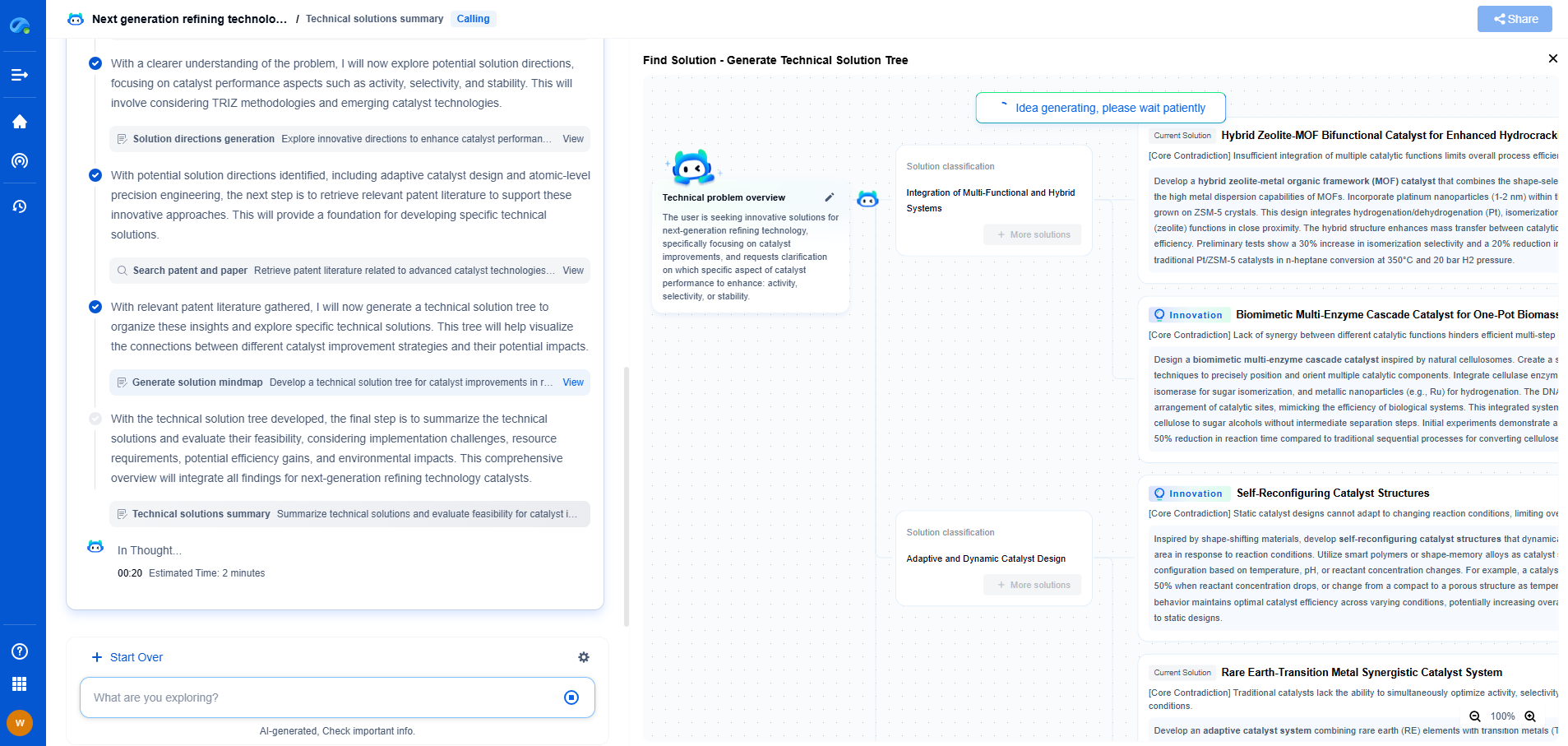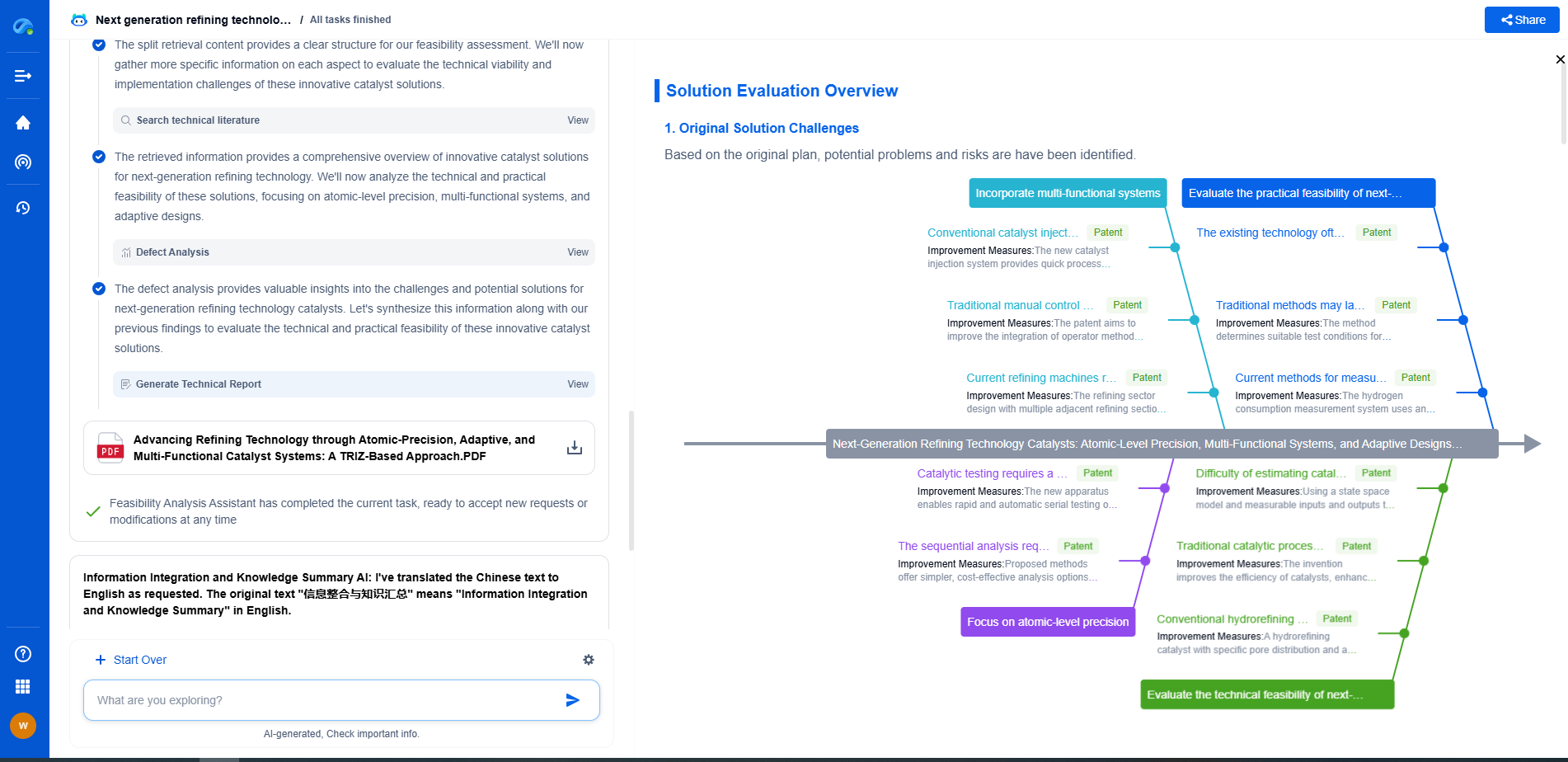Acoustic Emission Sensors for Structural Health Monitoring of Bridges and Pipelines
JUL 16, 2025 |
Acoustic emission (AE) sensors have emerged as vital tools in the field of structural health monitoring (SHM), especially for infrastructure such as bridges and pipelines. These sensors detect transient elastic waves generated by the rapid release of energy from localized sources within a material. This ability makes AE sensors highly effective in identifying the early onset of structural anomalies, enabling proactive maintenance and ensuring safety.
How Acoustic Emission Sensors Work
The fundamental principle behind AE sensors involves capturing the high-frequency elastic waves produced by structural changes, such as crack formation or growth under stress. When a material undergoes deformation or stress, it generates AE waves that travel through the structure. These waves are detected by AE sensors, which convert them into electrical signals for further analysis.
The data collected by AE sensors can be monitored in real-time, providing valuable insights into the integrity of a structure. By using advanced algorithms, these signals can be analyzed to determine the location, intensity, and nature of the structural changes, allowing for timely interventions.
Applications in Bridge Monitoring
Bridges are critical infrastructure components that require constant monitoring to ensure their safety and longevity. Acoustic emission sensors are particularly beneficial in detecting issues such as crack propagation in the bridge deck, fatigue in the steel elements, and corrosion in the reinforcement bars.
AE sensors can be strategically placed in high-stress areas or locations known to experience degradation over time. The continuous data provided by these sensors helps in understanding the stress distribution and load effects on the bridge. This information is crucial for maintenance planning and can significantly extend the lifespan of the infrastructure while minimizing the risk of catastrophic failures.
Utilization in Pipeline Monitoring
Pipelines, whether for water, oil, or gas, are lifelines for modern societies. Ensuring their integrity is paramount to avoid environmental disasters and economic losses. Acoustic emission sensors play a key role in pipeline monitoring by detecting leaks, corrosion, and crack formation.
The sensitivity of AE sensors allows them to detect the slightest anomalies in the pipeline structure. For instance, when a leak occurs, the escaping fluid produces AE waves that are captured by the sensors. These sensors can also detect the sounds of corrosion processes, enabling early detection and remediation. This proactive approach not only ensures safety but also reduces operational costs associated with pipeline failures.
Advantages of Acoustic Emission Sensors
One of the primary advantages of AE sensors is their ability to provide real-time monitoring of structures without being intrusive. Unlike traditional methods that might require halting operations or causing physical alterations to the structure, AE sensors can be installed with minimal disruption.
Additionally, AE sensors have a long monitoring range and can cover large areas, making them cost-effective for extensive infrastructure like bridges and pipelines. Their ability to detect very small changes and provide early warnings makes them indispensable in the preventive maintenance strategy.
Challenges and Future Prospects
Despite their numerous advantages, the deployment of acoustic emission sensors is not without challenges. The interpretation of AE data requires sophisticated algorithms and experienced personnel to distinguish between meaningful signals and background noise. Moreover, environmental factors such as temperature and humidity can affect sensor performance.
However, advancements in sensor technology and data analytics are continuously improving the reliability and accuracy of AE systems. The integration of AE sensors with other monitoring technologies, such as strain gauges and IoT devices, holds promise for more comprehensive SHM solutions.
Conclusion
Acoustic emission sensors are revolutionizing the way we monitor and maintain critical infrastructures like bridges and pipelines. By providing early detection of structural issues, these sensors help prevent failures, enhance safety, and optimize maintenance costs. As technology advances, AE sensors will likely become even more integral to the sustainability and resilience of our infrastructure. Embracing this technology is a step forward in safeguarding our societies from the unforeseen consequences of structural failures.
In the world of vibration damping, structural health monitoring, and acoustic noise suppression, staying ahead requires more than intuition—it demands constant awareness of material innovations, sensor architectures, and IP trends across mechanical, automotive, aerospace, and building acoustics.
Patsnap Eureka, our intelligent AI assistant built for R&D professionals in high-tech sectors, empowers you with real-time expert-level analysis, technology roadmap exploration, and strategic mapping of core patents—all within a seamless, user-friendly interface.
⚙️ Bring Eureka into your vibration intelligence workflow—and reduce guesswork in your R&D pipeline. Start your free experience today.
- R&D
- Intellectual Property
- Life Sciences
- Materials
- Tech Scout
- Unparalleled Data Quality
- Higher Quality Content
- 60% Fewer Hallucinations
Browse by: Latest US Patents, China's latest patents, Technical Efficacy Thesaurus, Application Domain, Technology Topic, Popular Technical Reports.
© 2025 PatSnap. All rights reserved.Legal|Privacy policy|Modern Slavery Act Transparency Statement|Sitemap|About US| Contact US: help@patsnap.com

